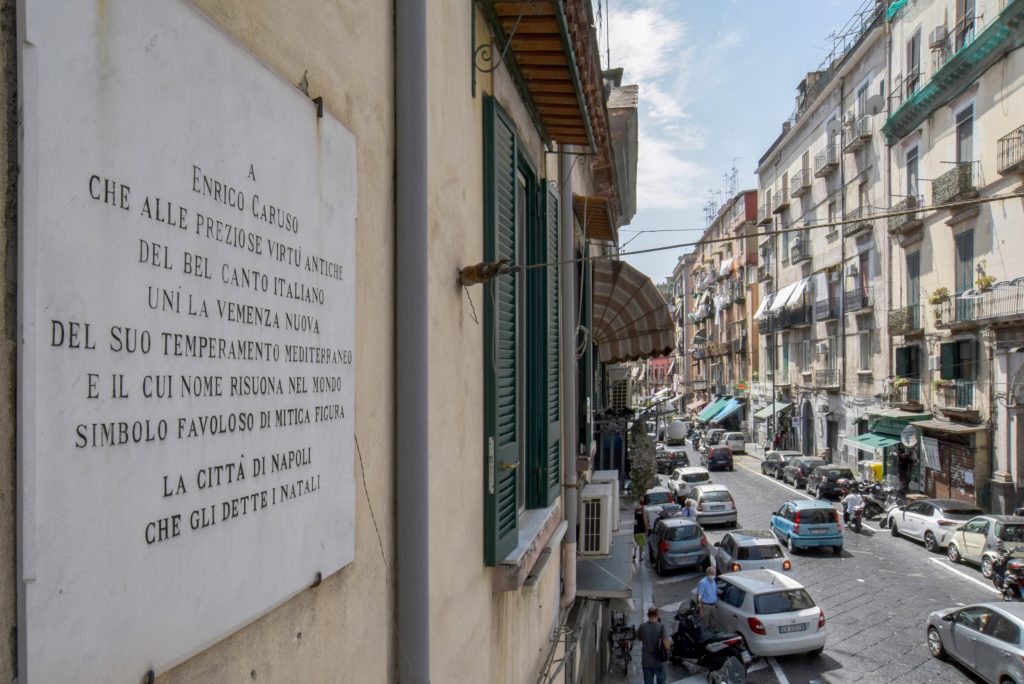Even today, his voice is among the most important in the history of world music and the first voice of Italian music to cross the ocean. We are talking about Enrico Caruso, the greatest tenor of all time, whose death in Naples (his home city) in 1921 it was commemorated this year in its centenary. Born into a modest and large family, he lived in an apartment of a few square meters until the state of misery and poverty pushed him to emerge into the only path he aspired to: music. But who was that child who had a very special talent from an early age?
Caruso was born on February 25, 1873 in Naples, in the popular district of San Carlo all’Arena, known as San Giovanniello agli Ottocalli to parents Marcellino, a metalworker, and Anna, a cleaning lady. Not far from his birthplace, in the small church of Santi Giovanni e Paolo where he was baptized, little Caruso began to sing without a proper musical education. At the age of ten, having attended compulsory studies, he worked in the foundries like his father and attended evening singing and drawing courses. He loved to create caricatures of himself. Some were even published. Encouraged by his mother, he participated in some theatrical performances and sang in the church choir.
With Caruso, we discover the story of a man who went through a history that belongs to the world, who became a symbol and a conflation point for the great migration of Italians to the United States, especially southern Italians who were classified as “the undesirables”.

From a poor neighborhood to the lights of the Metropolitan Opera House in New York
Inspired by the French café-chantants of the Moulin Rouge and Folies Bergère in Paris, the first Italian café-chantant was inaugurated in 1890 in Naples. Cancan dancers performed for the first time at the Salone Margherita. The premises of the Galleria Umberto I, together with the nearby Gran Caffè Gambrinus, became a reference for intellectuals of the Belle Époque, among which were journalists, artists and politicians. At the end of the nineteenth century, Naples was an international and highly cultured city. At the Teatro Nuovo, Enrico Caruso officially made his debut with L’amico Francesco, an opera by Mario Morelli, which afterward opened at the Teatro Mercadante. The tenor’s first performances took place in the theaters of Caserta, Salerno and Naples, with his first international performance abroad in Cairo.
During a performance of Puccini’s La Bohème – despite his engagement to the daughter of the impresario Giuseppe Grassi – Caruso met the soprano Ada Botti Giachetti, married with a child. Their relationship lasted 11 years and they went on to have two children, Rodolfo and Enrico Junior. After a brief interlude in Salerno, in 1897 the tenor moved to Milan where he made his debut at the Teatro Lirico as “Federico” in Francesco Cilea’s L’Arlesiana. Tours in Russia, Monte Carlo, Rome, Lisbon and London would follow. His London debut was in Covent Garden, with Giuseppe Verdi’s Rigoletto. During a performance in Gaetano Donizetti’s L’elisir d’amore, it seemed Caruso did not sing well due to strong emotions and insecurity. For critics, in particular the baron and music critic Saverio Procida, Caruso turned out to be a baritone and not a tenor. So disappointed by the reaction of his fellow citizens, Caruso decided not to sing in Italy, particularly in Naples, anymore. He concentrated his work in the United States and South America. Aïda, Faust, Carmen, Madame Butterfly and Il Trovatore are only some of his performances given at the Metropolitan Opera in New York, starting from 1903 with his debut in Rigoletto. To mark this period of his career, he commissioned Tiffany & Co. to produce a 24-karat gold medal engraved with his profile, to be given only to his closest friends.
Continue on Frontrunner Magazine.
